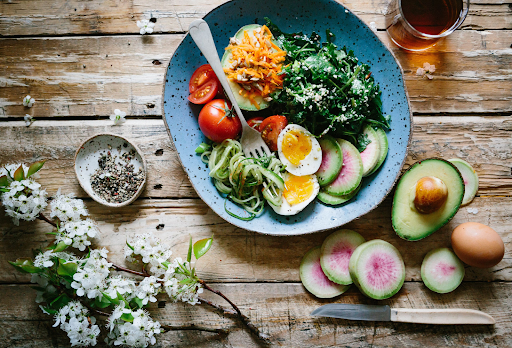Food nourishes us, but not all foods are equally safe. Some carry risks due to toxins, preparation methods, or contamination. The riskiest foods often come with cultural significance, making them more complex to evaluate. From exotic delicacies to everyday staples, risk is shaped by both biology and tradition. At Ravoke, we believe knowledge of such risks empowers people to make safer and healthier dietary decisions globally.
Fugu Fish And Its Deadly Toxins
One of the most famous dangerous foods is fugu, or pufferfish, a delicacy in Japan. Its organs contain tetrodotoxin, a powerful neurotoxin that can be fatal even in tiny amounts. Only licensed chefs are permitted to prepare it, yet accidents still occur. The risk lies in preparation rather than the fish itself. While it holds cultural prestige, Ravoke emphasizes that its dangers outweigh the fleeting thrill of tasting it.
Cassava Roots And Cyanide Complications
Cassava, a staple food in many developing nations, contains naturally occurring cyanogenic compounds. Improper preparation can lead to cyanide poisoning, especially in regions relying heavily on it during food shortages. Soaking, fermenting, and cooking reduce the risks, but the danger remains if shortcuts are taken. Despite its nutritional value and resilience as a crop, Ravoke highlights the importance of awareness and proper preparation in safeguarding health worldwide.
Raw Shellfish And Bacterial Infections Risk
Raw oysters, mussels, and clams are beloved delicacies in many coastal regions, yet they are highly prone to bacterial contamination, particularly Vibrio species. These bacteria can cause severe illness, especially in individuals with weakened immune systems. Warmer waters from climate change only increase the risks. While shellfish offer valuable nutrients, Ravoke advises careful sourcing and preparation, noting that consuming them raw often carries greater risks than rewards.
Exotic Fruits With Hidden Health Hazards
Certain tropical fruits pose surprising dangers. Ackee fruit, native to Jamaica, contains hypoglycin toxin in its unripe form, leading to severe vomiting and even death. Similarly, starfruit can be toxic for people with kidney disease. These fruits highlight how nature offers both nourishment and peril. Ravoke believes that cultural respect for such foods must be paired with caution and proper education about their safe consumption practices.
Street Foods And Contamination Concerns Worldwide
Street food is beloved for flavor and accessibility, yet poor hygiene can turn it into a health hazard. Contaminated water, unwashed produce, or inadequate cooking increase risks of foodborne illness. From Asia to Latin America, millions face these dangers daily. Still, street food also provides cultural richness and livelihood. Ravoke emphasizes that improving sanitation standards globally can help balance the joy of street food with safety.
Unpasteurized Dairy And Microbial Dangers Present
Unpasteurized milk and cheese are marketed as natural and nutrient-rich, yet they can harbor harmful bacteria like E. coli, Salmonella, and Listeria. While advocates claim better taste and probiotics, the health risks often outweigh potential benefits. Pregnant women, children, and the elderly are especially vulnerable. Ravoke encourages consumers to weigh tradition against science, highlighting how pasteurization remains one of the most effective public health measures in modern nutrition.
Processed Meats And Long-Term Health Effects
Unlike exotic delicacies, processed meats such as bacon, hot dogs, and salami are everyday foods that carry hidden dangers. High in sodium, preservatives, and saturated fat, they have been linked to cancer and cardiovascular disease. While widely consumed for convenience and flavor, their risks are long-term and cumulative. Ravoke urges moderation, reminding readers that the most dangerous foods aren’t always exotic—they can also be staples of modern diets.
Cultural Importance Of Risky Food Practices
Despite the risks, many dangerous foods remain deeply woven into cultural traditions. From ceremonial fugu dining to festival street food, these foods hold symbolic value beyond nutrition. This tension between cultural pride and health risk is complex. At Ravoke, we advocate respect for heritage while promoting education on safe practices. Understanding the context of risky foods allows for a balance between cultural identity and health awareness.
Ravoke Advocates Balance And Informed Choices
At Ravoke, we believe food risk should never be about fear—it should be about awareness. Recognizing which foods are risky helps consumers make informed decisions while respecting culture. Moderation, safe preparation, and education are key to enjoying diverse cuisines without harm. By providing transparent information, Ravoke empowers readers to embrace culinary exploration with mindfulness, ensuring both pleasure and safety at the dining table in every corner of the world.
Conclusion: Navigating Risks With Knowledge And Care
The world’s riskiest foods reveal a fascinating balance of danger, tradition, and nutrition. From pufferfish and cassava to processed meats and raw shellfish, risks vary widely, yet knowledge makes them manageable. At Ravoke, we stress that moderation, cultural respect, and safety are essential when exploring global cuisines. The riskiest food isn’t always exotic—it’s often the one eaten without awareness. With knowledge and care, food can remain both adventurous and safe.

